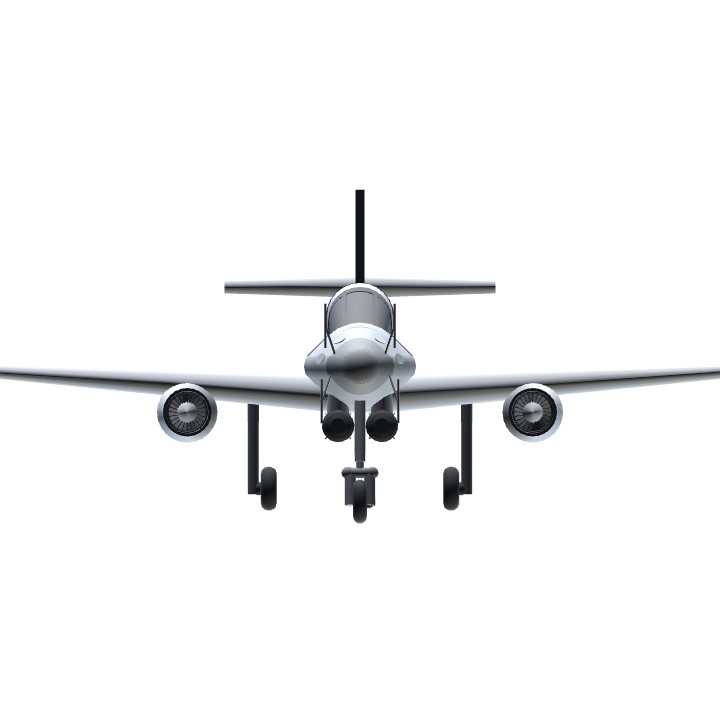Night fighter variant. use joystick to fly
Fly at night and shoot guns
(Not 100% accurate!) Credit SuperCraft for helping to get it to fly!

(Source)
The high performance of the Me-262 made a tandem-seat operational conversion trainer version desireable, and such an aircraft, the "Me-262B-1a", was introduced in the summer of 1944. The trainer of course had dual controls, with the second seat replacing one of the fuel tanks. Range was extended by fitting two 300 liter (80 US gallon) external tanks under the forward fuselage. About fifteen were built.
The trainer led to the impressive "Me-262B-1a/U1" night fighter, with "FuG-218 Neptun" long-wavelength radar and "Naxos" centimetric-radar-homing gear, plus armament of two MK-108 30 millimeter cannon and two MG-151 20 millimeter cannon. The type was put through trials in October 1944 by the well-known Hajo Hermann. The Neptun "antler" antennas slowed the aircraft down, but it was still faster than the hated British Mosquito, which preyed on German night-fighters.
During the following winter, Kurt Welter, head of "Kommando Stamp", used Me-262A-1a day fighters for "Wilde Sau (Wild Boar)" night fighting, and in April the unit obtained a few of the Me-262B-1a/U1 night-fighter variants. Despite all the difficulties, Welter claimed 20 kills, making him one of the first jet aces and likely the highest-scoring jet ace in all history.
By the end of the war, Messerschmitt was working on a prototype of the improved "Me-262B-2a" night fighter with a longer fuselage and increased fuel capacity. It was fitted with the Neptun radar at the outset, but there were plans to fit it with the "Berlin" centimetric radar, with improved range and resolutions and a dish hidden in the nose, instead of the clumsy and drag-inducing "antlers" of the long-wavelength radar. There was also consideration of fitting the Me-262B-2a with upward-firing cannon installed in the rear fuselage to allow it to attack RAF bombers from their belly blind spot.


Specifications
General Characteristics
- Predecessor Messerchmitt Me-262 B-1a-U1
- Created On Windows
- Wingspan 26.8ft (8.2m)
- Length 25.6ft (7.8m)
- Height 12.4ft (3.8m)
- Empty Weight N/A
- Loaded Weight 8,976lbs (4,071kg)
Performance
- Power/Weight Ratio 15.772
- Wing Loading 52.3lbs/ft2 (255.2kg/m2)
- Wing Area 171.7ft2 (16.0m2)
- Drag Points 5430
Parts
- Number of Parts 121
- Control Surfaces 6
- Performance Cost 527






